Athletes benefit from care-management tool; soldiers could be next
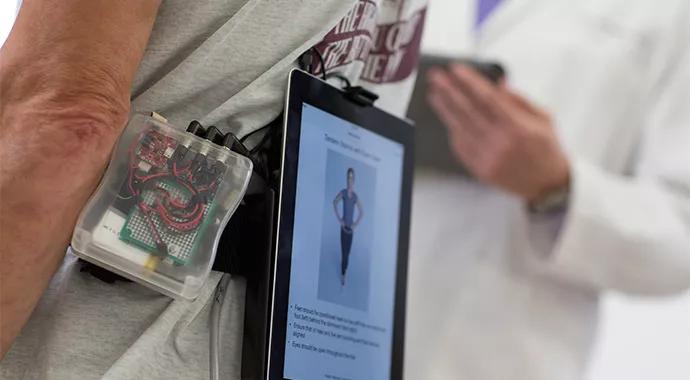
Cleveland Clinic is a non-profit academic medical center. Advertising on our site helps support our mission. We do not endorse non-Cleveland Clinic products or services. Policy
When it comes to healthcare apps developed for the iPad®, peer-reviewed publication of validation studies is essential. Yet it simply doesn’t give an app the reach and opportunity to touch the public imagination that come with being highlighted in Apple’s “What will your verse be?” iPad campaign — the ultimate third-party endorsement of the approach behind an app.
We are honored that Cleveland Clinic’s C3Logix™ app for concussion assessment achieved both these distinctions in 2014. Together they provide further support for a broad, coordinated “Orchard of Neurological Apps” strategy now underway across Cleveland Clinic’s Neurological Institute to adapt the C3Logix app’s functionalities for new and enhanced clinical applications to other neurological diseases. This article summarizes this and other recent developments in the evolution of C3Logix and the implications for concussion management.
The C3Logix app utilizes the iPad’s gyroscope and accelerometer to collect biomechanical data that are used to objectively quantify postural stability while an individual performs balance tests with the iPad secured at the waist. C3Logix also assesses cognitive function through tasks performed with a stylus on the iPad screen.
Originally developed for concussion assessment in athletes, the app is used for baseline testing and then deployed by athletic trainers, physicians and physical therapists for assessment across the injury spectrum, from injury to return-to-play/return-to-school decisions. The use of a common set of assessment information results in better handoffs between caregivers across disciplines.
In recent months, Cleveland Clinic Concussion Center researchers have published studies validating the ability of C3 Logix to quantify postural stability as precisely and accurately as gold-standard measures do.1,2
Use of C3 Logix by high schools and colleges for students playing contact sports has grown substantially since its debut in the 2011-2012 school year (see Table).
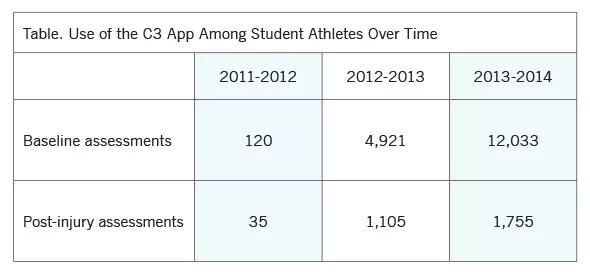
Use has extended beyond Northeast Ohio to include teams at various universities around the nation, including Texas A&M University, University of Kansas, Colgate University, University of Texas, Harvard University and others.
The Concussion Center has a particular interest in making the C3Logix app available to high school athletes in communities that may lack, or have barriers to accessing, providers with experience in managing concussion and the complex return-to-school and return-to-play decisions concussed athletes face.
To that end, we have made C3Logix available, along with portions of the Cleveland Clinic Concussion Care Path, for use in athletes at high schools in the rural town of Rock Valley, Iowa, as well as in inner-city Los Angeles. Although these two student populations differ widely in demographic and socioeconomic status, they face a similar challenge: access. Both groups lack access to providers with specialized concussion experience. Our hope is that the C3Logix app and the care path (designed to reduce inappropriate and costly variations from evidence-based care) will do the following:
We believe sharing these tools to measure outcomes and guide care processes delivers value far beyond what stand-alone consulting can offer, although Cleveland Clinic concussion specialists are available to providers in these communities for consultation as needed.
Meanwhile, the Concussion Center is pursuing funding for a project to deploy the C3Logix app and Concussion Care Path to at least 10 more hospital affiliates around the country to study how these tools’ standardized management approach can impact concussion care beyond Cleveland Clinic in terms of objective clinical, quality-of-life and financial outcomes. The resulting demographic and outcomes data should enable us to develop injury prevention models (based on sport, gender, age and other variables) as well as predictive recovery curves.
Our ability to transfer these tools to remote settings stems from the fact that C3Logix is integrated into the Concussion Care Path without being reliant on or requiring integration into an institution’s given electronic medical record (EMR) system. This is helpful since most caregivers on the playing field do not have access to an EMR system. This independence from the EMR also helped pave the way for the recent addition of C3Logix to Apple’s business-to-business (B2B) app store to enable its use by interested healthcare organizations.
The third version of C3Logix was released in August 2014, with refinements that improve the user interface and in-app data visualization capabilities.
A key addition is a new “incident report” workflow module that essentially bookends the injury by documenting the timing and essentials of the injury (major symptoms and signs, plus demographics) as well as when the athlete begins the return-to-play process. While these may seem like basic data points, they are not easily collectible via many EMR systems, so integrating their capture into the app itself ensures their systematic collection to allow better understanding of injury severity and how it impacts care, recovery and utilization of services (and thus costs) across large populations. This will prove invaluable to future efforts to develop predictive analytics around return to play and similar issues.
Another refinement is the recent release of a version of the app for the iPhone and iPod Touch, currently in beta testing.
More dramatic C3Logix refinements are now underway thanks to a Department of Defense grant we’ve received to adapt the app for assessing mild traumatic brain injury (mTBI) in military personnel. This work aims to determine military-based norms in the motor and cognitive functions measured by the app, under the assumption that these norms differ from those among student athletes, given the stress, unpredictable sleep and other factors that military personnel are subject to.
These norms will be developed over six to nine months of study among 300 troops at Marine Corps Base Camp Lejeune in North Carolina. We will then adapt C3Logix for military use, making additions and deletions as needed and leaving behind the technology for use in assessing Marines with mTBI who come through for training.
The military studies will also include testing of dual-task paradigms (such as balance plus cognitive tasks) to reflect the reality that military personnel increasingly need to perform demanding cognitive tasks (e.g., visually monitoring data displays or interpreting radio transmissions) while performing taxing physical activities. In these studies, the iPad will monitor subjects’ postural stability and other motor/functional measures while subjects use handheld switches to indicate responses to a cognitive task presented visually or via headphones.
We are developing the same type of dual-task testing to monitor and assess deep brain stimulation (DBS) in patients with Parkinson disease (PD) (Figure).
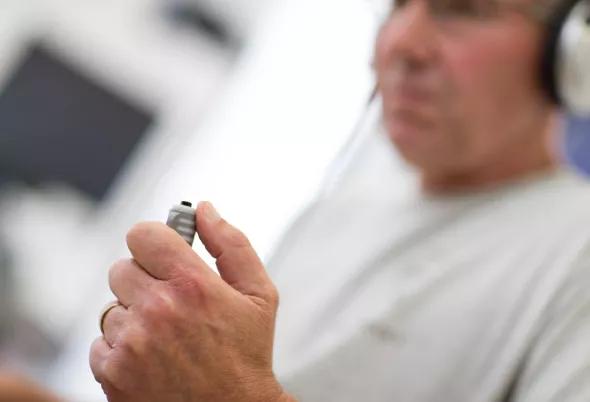
Figure. A patient with Parkinson disease undergoes dual-task assessment via a modified version of the C3Logix app. The patient is using a handheld switch to signal responses to a cognitive challenge presented through headphones while the app simultaneously monitors his postural stability.
This work is prompted by the fact that stimulation in the subthalamic nucleus may compromise the patient’s cognitive function. We are aiming to monitor cognitive function and postural stability in patients during DBS to enable adjustment of stimulation parameters to maintain improvements in stability and gait without hindering cognitive function.
These efforts to expand and adapt the capabilities of C3Logix to assess additional conditions are consistent with the Neurological Institute’s emerging Orchard of Neurological Apps initiative to leverage digital health technology and common data elements across a range of neurologic conditions.
Rather than using new digital health technologies to create one-off apps, which results in multiple fragmented approaches to care, our aim is to look at mobile apps as modules to be applied across common functional domains for various conditions (think orchard vs. individual trees). This approach lends itself to pooling of data, when appropriate, to enable aggregation of large data sets to make possible powerful predictive analytics around elements of cognitive and motor functioning.
Balance is a prime example. Our aforementioned study validating the C3Logix app’s ability to quantify postural stability in older adults2 was an essential step toward translating the app’s balance component — which we call the Cleveland Clinic Balance App — for use in populations such as patients with PD, stroke, multiple sclerosis and mTBI.
Another highly promising application of the Balance App is for falls prediction and prevention. Patient falls remain a stubbornly common and costly adverse event, and traditional fall-risk questionnaires are notoriously subjective, largely ineffective and lacking in precision. To address this challenge, we are conducting a pilot study in which Cleveland Clinic nurses will use the Balance App to quickly assess hospitalized patients’ postural stability to predict risk for falls and eventually guide prevention interventions accordingly. We will compare fall rates and associated costs between inpatients screened with the Balance App and those screened with traditional questionnaires.
We are working with a collaborator at a nursing home in western Pennsylvania to conduct a similar pilot study in the dependent care setting.
Examples of similar spinoffs and adaptations of the C3Logix app apply to Cleveland Clinic’s emerging technology-enabled approaches to PD, multiple sclerosis and other conditions. Our goal is to strategically use complementary healthcare apps to transform mobile devices from expensive electronic notebooks into scalable data-collection systems. Predictive analytics will follow, which promise to bring improved outcomes, reduced cost and increased value.
Dr. Alberts is Director of the Concussion Center and Vice Chair for Health Technology Enablement in Cleveland Clinic’s Neurological Institute.
1. Alberts JL, Hirsch JR, Koop MM, et al. Quantification of postural stability using accelerometer and gyroscopic measures. J Athl Train. In press.
2. Ozinga SJ, Alberts JL. Quantification of postural stability in older adults using mobile technology. Exp Brain Res. 2014 Dec;232(12):3861-3872.
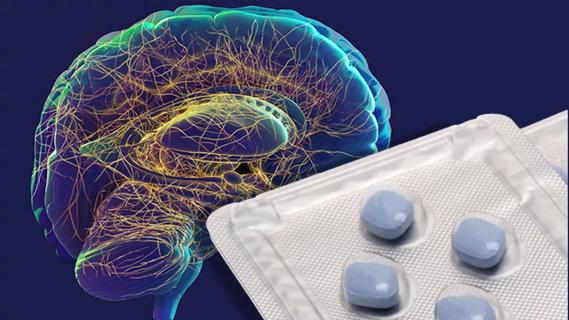
Real-world claims data and tissue culture studies set the stage for randomized clinical testing
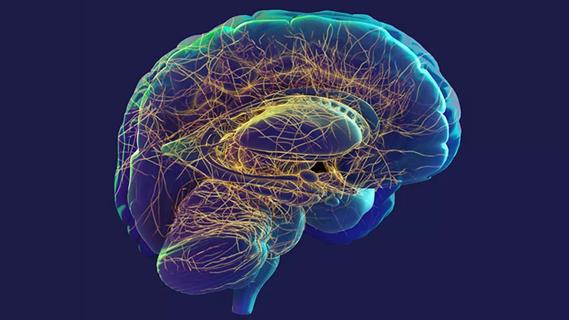
New grant-funded investigation illustrates impact and reach of Cleveland Clinic Brain Study
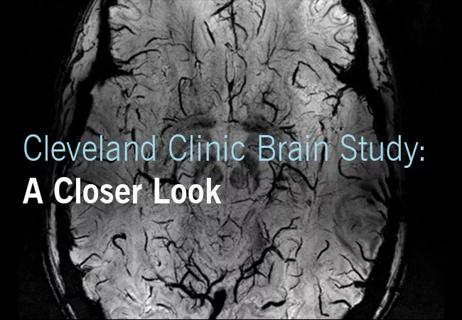
How the new longitudinal investigation could become the Framingham Heart Study of brain health
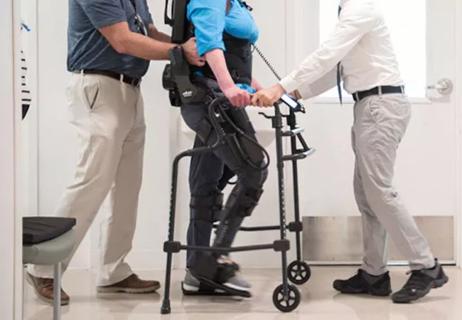
Pilot findings show good patient acceptance and safety, early hints of efficacy

Study finds high prevalence of symptoms, willingness to seek treatment

Panel outlines research priorities around a promising alternative to imaging markers
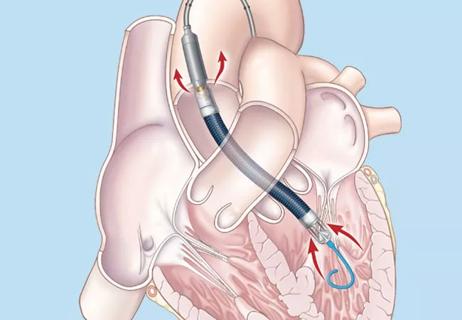
Suspected factors include antithrombotic intensity, time on device, presence of thrombocytopenia
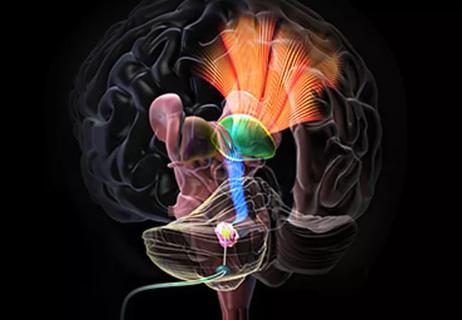
Preclinical studies will assess whether method developed for stroke recovery curbs deficits after brain injury